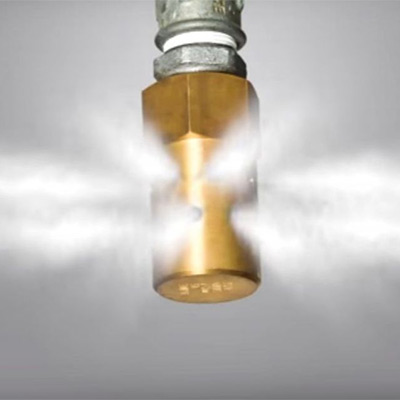The Future Direction
Nanotechnology, or the science and technology of manipulating materials at the atomic and molecular level, is becoming increasingly used in various areas of life. Fire protection is no exception. The introduction of nanotechnology to sprinkler systems can help increase the efficiency of fire extinguishing and reduce damage resulting from the use of water or other extinguishing agents. In this article, we will present the potential applications of nanotechnology in fire sprinklers and the benefits that this innovative technology can bring.
Potential Applications of Nanotechnology in Fire Sprinklers
- Nanoparticles in extinguishing agents: The use of nanoparticles in extinguishing agents, such as water, foams or powders, can increase their effectiveness in extinguishing fires. Nanoparticles can change the physical and chemical properties of extinguishing agents, which allows for more effective coating and cooling of burning materials or limiting the access of oxygen.
- Sprinklers with Nanocomposites: Nanotechnology can also be used in the construction of fire sprinklers, by using nanocomposite materials with better mechanical, thermal or corrosion resistance properties. Sprinklers with nanocomposites can be more durable and efficient.
- Intelligent sprinkler systems: Nanotechnology can also support the development of intelligent sprinkler systems that are capable of detecting the type and size of fire and then adapting extinguishing strategies to specific conditions. This could include selective use of extinguishing agents or controlling the flow of water.
- Nanoparticles as smoke detectors: Nanoparticles can also be used as highly sensitive smoke detectors that can quickly detect fire and activate sprinkler systems. This allows fire protection systems to operate faster, which helps limit the spread of fire.

Benefits of Nanotechnology in Fire Sprinklers
- Increased fire extinguishing efficiency: The use of nanotechnology in fire sprinklers can lead to increased fire extinguishing efficiency. Thanks to nanoparticles in extinguishing agents and intelligent sprinkler systems, fires can be extinguished faster, which translates into less material losses and less risk to human life.
- Saving water and reducing damage: The use of nanotechnology in sprinklers can help save water and reduce damage caused by its use. Sprinklers can adjust the amount of water used to specific conditions, and nanoparticles can increase the extinguishing efficiency of water, which means less loss due to flooding.
- Reduced failure rate and longer service life: The use of nanocomposites in sprinkler construction can lead to increased durability and reduced failure rate. As a result, maintenance and repair costs can be lower, which translates into greater cost-effectiveness of fire protection systems.
- Faster fire detection: Nanotechnology used in smoke detectors may enable faster fire detection, which is crucial for limiting the spread of fire and evacuating people at risk. Faster operation of fire protection systems may contribute to greater safety of buildings and people in them.
Summary
Nanotechnology has the potential to significantly impact the development and functioning of fire sprinklers. The use of this innovative technology can help increase the efficiency of fire extinguishing, reduce damage resulting from the use of water or other extinguishing agents, and also to detect fires and activate fire protection systems faster. Further research and development of nanotechnology in the field of fire protection has the potential to contribute to even greater safety of people and property from the threat of fire.
